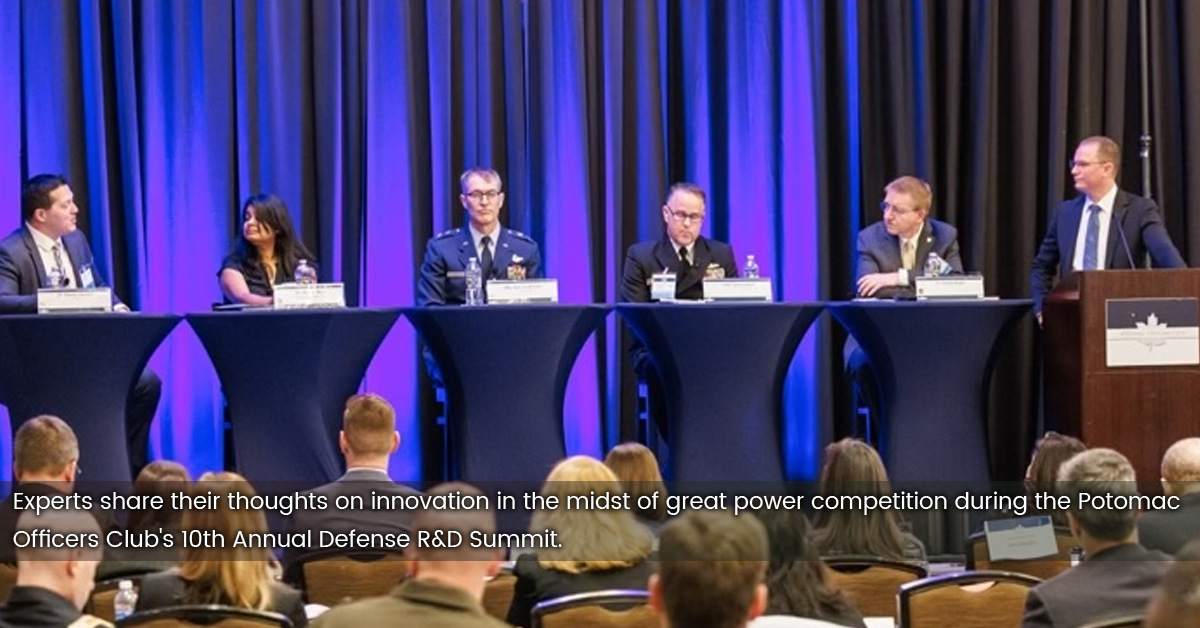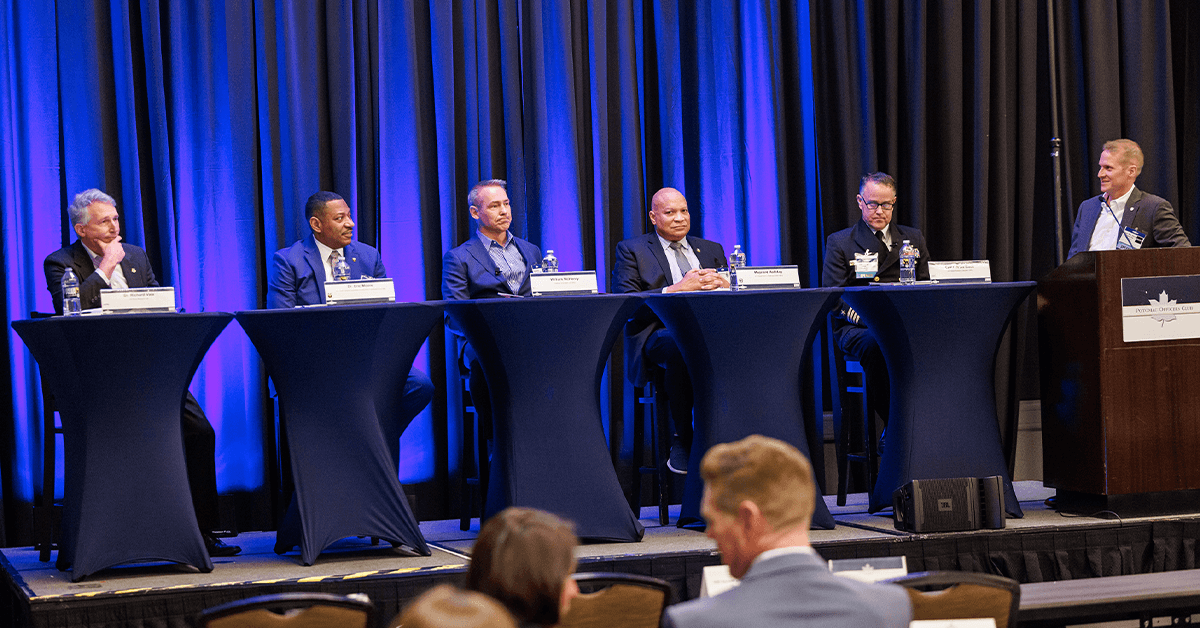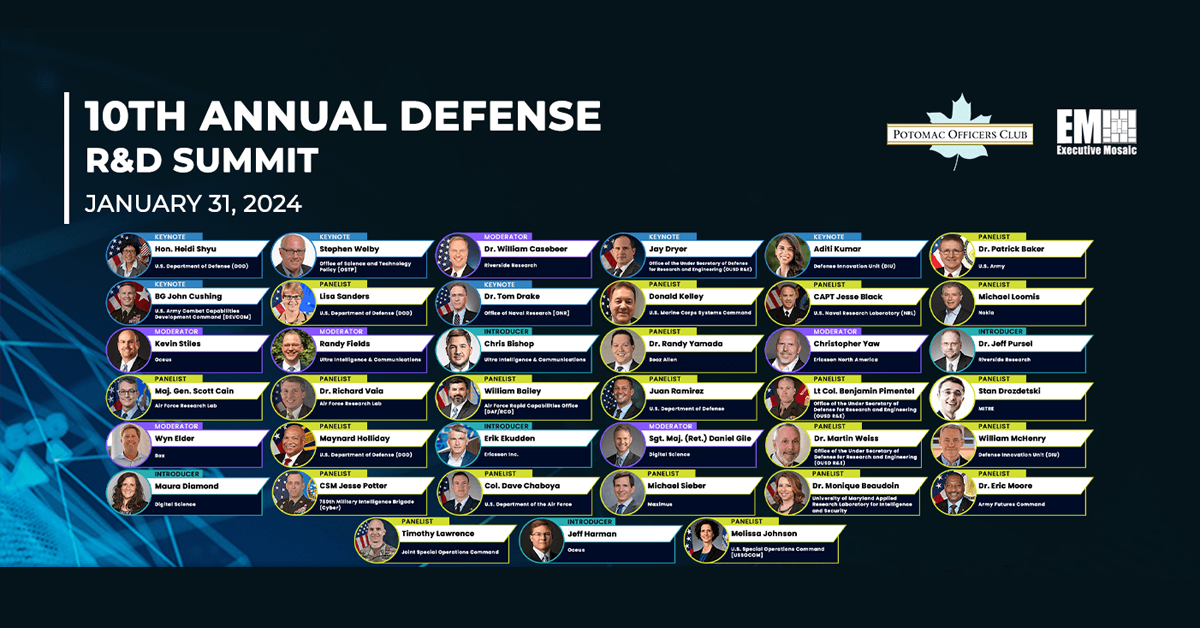Science and technology are foundational elements of many U.S. Department of Defense initiatives and a key part of keeping pace with near-peer competitors. Though the nation has an expansive innovation ecosystem, there are still stovepipes that exist between S&T organizations, and according to defense experts, breaking down these barriers is necessary to maintain a technological advantage.
“Think of this in terms of great power competition. How can you compete with a system where an adversary can vertically align all their resources and has control over all those resources, whether it’s their universities, whether it’s their industries that are state owned, whether it’s the military and the connection to that pipeline?” Maj. Gen. Scott Cain, commander of the Air Force Research Laboratory, asked during the Potomac Officers Club’s 10th Annual Defense R&D Summit on Wednesday.
The way to do so, he said, is “coming together as government, industry and academia” and making sure everyone is on the same page about what specific problem they are trying to solve.
Dr. Patrick Baker, director of the U.S. Combat Capabilities Development Command within the Army Research Laboratory, said that once each collaborator in a program understands the problem, they should create “not just academic teams or research-led teams, but teams to connect across industry operations and then learn together.”

Widening the available channels of communication, said Capt. Jesse Black, commanding officer of the Naval Research Laboratory, is “very easy said, but very difficult to execute,” especially across the DOD and the vast industrial base.
Currently, there are many similar goals between various military components, but they do not always work in harmony. Cain said that if the service branches come together to identify what these objectives are, they could collaborate on related projects.
He noted artificial intelligence as an example of a shared priority.
“There is some domain specificity to the problem, but that interaction between the human and machine foundationally has a common thread and common technology that I think we should be working on together,” said Cain.
Black said that good guidance is another part of determining the direction in which a team will go with a program. Guidance, he said, makes it very clear what a team is working toward and why.
Dr. Randy Yamada, vice president at Booz Allen Hamilton, said that while structure is important, it should leave room for creativity to thrive.

The U.S. has a “rich ecosystem that’s messy, but that can produce surprise,” according to Dr. Bindu Nair, director of the basic research office within the DOD’s Office of the Under Secretary of Defense for Research and Engineering. This openness allows for unexpected discoveries to occur, and Nair said it is something America does well.
To take advantage of the innovations that come from this structure, Nair said the nation should come together to “translate it into things that we care about faster.”
“Right here we’re seeing an ecosystem that takes things from the science community and brings it into operations faster than the competitor. And if we lose the ability to do that, to translate things faster than the competitor, we could lose pretty much everything,” she cautioned.
Yamada expressed his optimism about being able to maintain this speed. The U.S., he said, has the “right ingredients to outplay” countries that can vertically align their resources more easily.

Don’t miss the Potomac Officers Club’s next event, the Workloads at the Tactical Edge Forum on Feb. 8. At the event, public and private sector leaders will come together to explore the impact of emerging technologies on edge operations. To learn more and register to attend the forum, click here.






